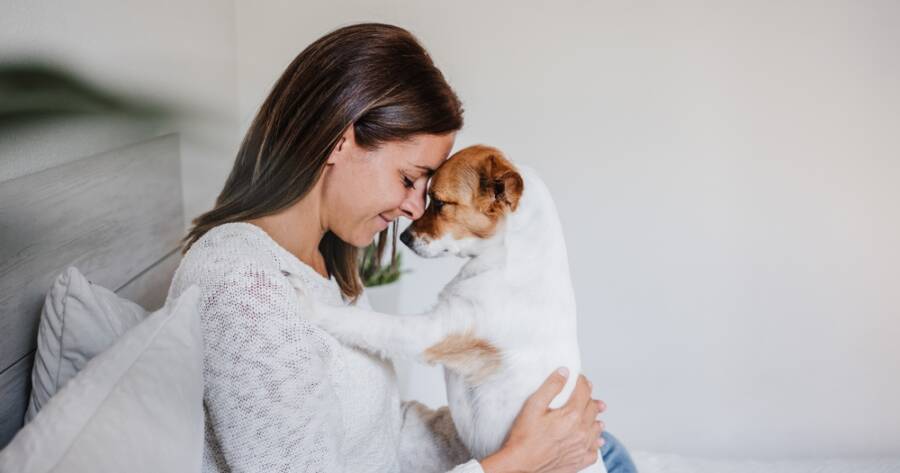Pets can experience anxiety just like humans, and recognizing their stress signals is the first step toward helping them feel safe and secure. Whether it’s thunderstorms, vet visits, or separation anxiety, knowing how to calm your pet can make a world of difference. Simple techniques can ease their nerves and strengthen your bond. With the right approach, you can create a peaceful environment where your pet feels relaxed and confident.
Create a Safe and Comforting Space
A dedicated safe space can provide comfort for an anxious pet. Whether it’s a cozy crate, a quiet corner, or a specific room, having a familiar retreat helps pets feel secure. Soft bedding, favorite toys, and an item with your scent can reinforce a sense of safety. For dogs, a crate can serve as a den-like sanctuary, while cats may prefer a high perch or hidden spot.
Reducing loud noises and sudden disruptions near their safe space is key. If your pet struggles with separation anxiety, gradually increasing alone time in their safe zone can help build independence. Adding calming elements like a white noise machine or pheromone diffusers can further enhance relaxation. A secure environment is the foundation of anxiety relief.
Use Gentle Touch and Massage
Physical touch is a powerful way to calm an anxious pet. Slow, deliberate petting in a rhythmic motion can lower heart rates and reduce stress hormones. Some pets respond well to specific massage techniques, such as long strokes along the spine or gentle circular motions on pressure points. For dogs, massaging the chest or base of the ears promotes relaxation.
Cats often enjoy slow head rubs and chin scratches. Be mindful of body language—some pets may need space before accepting touch. A consistent and reassuring presence helps reinforce trust. Pairing touch with a calm voice can further soothe nervous pets. Over time, a gentle touch routine can become an effective way to ease anxiety during stressful situations.
Try Calming Sounds and Music
Sound can have a profound effect on a pet’s anxiety levels. Soft classical music, nature sounds, or specialized pet relaxation playlists can help reduce nervous energy. Studies have shown that slow-tempo music can lower stress responses in both dogs and cats. White noise machines can also mask triggering sounds like fireworks or thunderstorms.
Some pets find comfort in the sound of their owner’s voice, so leaving a recording of soothing speech when you’re away can provide reassurance. If your pet gets anxious during car rides, playing calming music in the background can create a more relaxed atmosphere. Experimenting with different sounds can help determine what works best for your pet, making stressful moments more manageable.
Provide Mental Stimulation and Distraction
Keeping an anxious pet engaged with interactive activities can help redirect nervous energy. Puzzle toys, treat-dispensing balls, and snuffle mats stimulate their minds while providing a positive focus. Chewing is a natural stress reliever for dogs, so offering safe chew toys or long-lasting treats can help ease anxiety.
For cats, engaging toys like feather wands or laser pointers can shift their attention away from stress triggers. Training sessions that involve simple commands or tricks provide both mental exercise and reassurance through positive reinforcement. When a pet is mentally occupied, they are less likely to dwell on stressors. Incorporating regular playtime into their daily routine can help manage anxiety while strengthening the bond between pet and owner.
Use Aromatherapy and Calming Scents
Certain scents have natural calming properties that can help ease pet anxiety. Lavender, chamomile, and valerian root are known for their soothing effects on both humans and animals. Pet-safe essential oils, used in a diffuser or lightly applied to bedding, can create a calming atmosphere.
However, essential oils should always be diluted and researched carefully, as some can be toxic to pets. Pheromone diffusers, such as Adaptil for dogs and Feliway for cats, mimic natural calming signals and help reduce stress-related behaviors. Spraying a pet’s bedding or favorite resting area with a calming scent can reinforce feelings of security. Using aromatherapy alongside other calming techniques can create a more relaxed environment, helping pets feel safe and at ease.
Establish a Predictable Routine
Pets thrive on consistency, and a structured routine can significantly reduce anxiety. Feeding, walks, playtime, and bedtime should occur at the same time each day to provide stability. Unpredictability can trigger stress, especially in anxious pets, so maintaining a regular schedule helps them feel secure.
Before leaving the house, keeping departures low-key prevents separation anxiety from escalating. Creating pre-bedtime rituals, such as a short walk or gentle petting session, signals that it’s time to relax. Even small changes, like announcing your return before opening the door, can help pets feel more in control. Over time, a predictable routine reassures pets that their needs will always be met, reducing uncertainty and fostering a calm, confident demeanor.
Helping Your Pet Find Peace and Comfort
Anxiety in pets can be challenging, but with the right techniques, you can create a soothing environment that helps them feel safe and secure. Whether it’s through gentle touch, calming scents, structured routines, or interactive distractions, small changes can make a big difference in their well-being.
Every pet is unique, so patience and consistency are key. By tuning into their needs and providing reassurance, you can help your furry companion lead a calmer, happier life.

